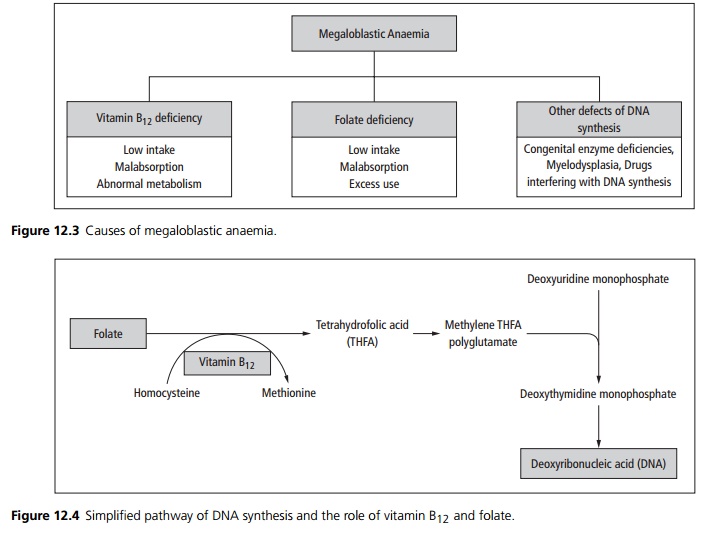Chapter: Medicine and surgery: Haematology and clinical Immunology
Megaloblastic anaemia - Macrocytic anaemia
Megaloblastic anaemia
Definition
Megaloblastic anaemia is characterised by the presence in the bone marrow of megaloblasts and macrocytic red blood cells.
Aetiology
The causes of megaloblastic are shown in Fig. 12.3.

Pathophysiology
Defective DNA synthesis (see Fig. 12.4) causes delayed nuclear maturation in red cell precursors (erythroblasts), which are enlarged (megaloblasts) and develop into enlarged red blood cells (macrocytes). There is also abnormal neutrophil development.
Clinical features
Symptoms and signs of anaemia.
Investigations
Full blood count demonstrates anaemia with macrocytosis (raised MCV). Blood film also reveals neutrophils with a hypersegmented nucleus. Serum vitamin B12 and red cell folate levels should be measured. For further investigations and management see below.
Related Topics